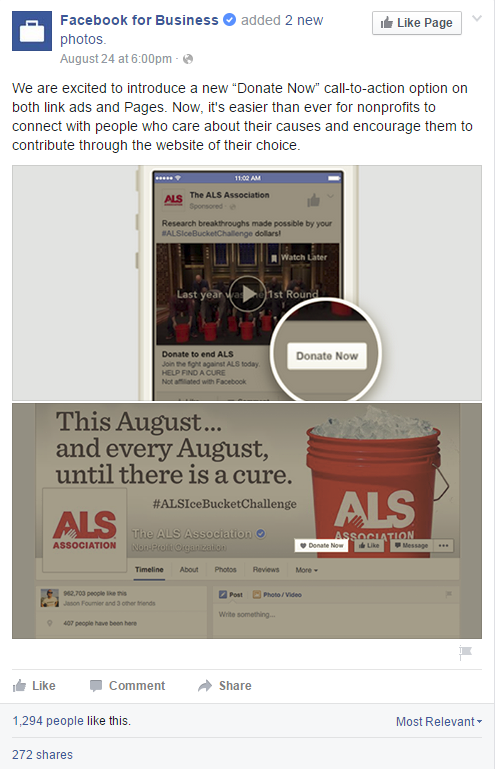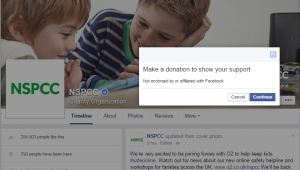What Facebook’s Donate Now button means for Charity Comms
If there is one thing that fundraising inititaives such as the ILS Ice Bucket Challenge, No Make Up Selfie and Stephen Sutton’s appeal for The Teenage Cancer Trust has taught us, it is that social media today plays a vital role in putting social cause driven interests into action. The unprecedented millions raised by the individual initiatives above demonstrates how the support shown on social media has gone beyond likes, pokes, shares and retweets and is proof that networking platforms have indeed become the present and future of fundraising and charity comms.
It is no wonder then that Facebook has taken the first step in putting this trend into action. The networking giant introduced a ‘Donate Now’ button this week which will be available on both link ads and company pages to enable users to act on the cause they support at a click of a button.
For PR professionals representing the charity sector who mostly rely on external funding to directly engage with audiences at a relatively low cost, Facebook’s move will be much welcomed and quickly embraced. We can say that because according to the Social PR Study 2015 published by Vuelio earlier this year, PRs at public sector and not-for-profit teams were the most optimistic (compared with PRs from all other sectors) about the impact social media has had on PR. The Study found that 75% of in-house (not-for-profit) PRs felt that social media has improved the productivity of their work. Meanwhile, non-profit PR, for both public sector and charities, appeared to be sophisticated and pro-active in directly engaging audiences at relatively low cost.
Already charities such as The Dogs Trust, NSPCC and Shelter have installed the button and more are likely to follow in the near future.
To be sure, Facebook had previosuly launched the Donate Now button in 2013 in partnership with The American Cancer Society and The Red Cross but now it has opened it up to charities it is not directly associated with. As a result, when users click on the button, Facebook first puts out a disclaimer that it is not directly affiliated with the organisation, before directing them to the website or page. Bath Kanter, a trainer and author of the book The Networked Nonprofit, feels the disclaimer might back-fire. Talking to the Third Sector magazine, she said ‘the disclaimer might put some people off donating because they thought it was a scam.’ The fact that charities cannot yet customise the wording on the button was another factor that she felt might deter people from donating via Facebook.
In the end it will come down to the Facebook campaigns PRs design to help instill confidence and credibility in their communications and make the user, well, donate now.
In the coming days, it will undoubtedly be an interesting space to watch and see how charities make use the feature and the results that come out of it.
Photo Courtesy of Maria Elena on Flickr






Leave a Comment